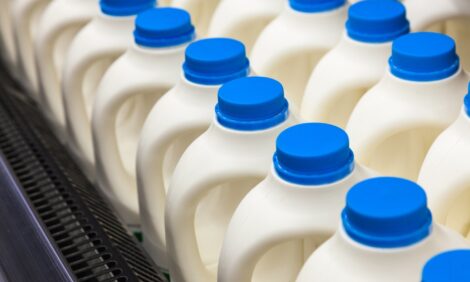



Measuring Methane Production From Dairy Cows
UK - There is increasing evidence that changes in global climate patterns are linked to emissions of greenhouse gases, with agriculture an important source of these gases. Within Northern Ireland approximately 21 per cent of total greenhouse gas emissions are from agriculture, compared to only seven per cent within the UK as a whole.Background
So why is this important for dairy farmers in Northern Ireland? Firstly, many governments are setting targets by which greenhouse gas emissions should be reduced, and there is increasing pressure to meet these targets (consider the Nitrates Directive, and the impact this has had on how you farm!). Secondly, supermarkets are increasingly interested in being able to demonstrate that the produce they sell has a low carbon footprint, and in the future may seek to source milk from farmers who are able to demonstrate that their production systems have a low carbon-footprint.
Which are the main greenhouse gases?The main greenhouse gases emitted from agriculture are carbon dioxide, methane and nitrous oxide. Carbon dioxide is produced from the burning of fossil fuels (ie diesel in tractors, electricity production, fertiliser manufacture), methane is produced by ruminant livestock and from slurry in stores, while nitrous oxide is mainly produced by bacteria within the soil.
Methane and nitrous oxide are much more ‘potent’ as greenhouse gases than carbon dioxide, and have a ‘global warming potential’ that is 25 and 298 times greater (respectively) than carbon dioxide.
Methane production is a natural process which takes place when bacteria within the rumen of a cow digest the food being consumed. The methane produced in the rumen is lost through the cows mouth when she belches. Although it is a natural process, it represents a significant inefficiency within the animal. For example, approximately 6 – 8 per cent of the energy which a cow consumes is lost as methane! This is energy which could have been used for milk production. The quantity of methane produced is influenced by the amount of food consumed and by the type of diet offered. Cows with higher food intakes will also produce greater amounts of methane. In addition, cows consuming a poorer quality diet (ie mostly silage) will normally have a higher methane output than those which are consuming diets containing a large quantity of meal. We now have a good understanding of factors which influence the amount of methane produced by cows on indoor diets.
What about grazing cows?At present there is relatively little information available on the amount of methane produced by cows while grazing. The main reason for this is that it is much more difficult to measure methane production from grazing cows than from cows confined within a house. However, as most cows within Northern Ireland spend over half of their life grazing, it is critical that we understand how much methane they produce while grazing. This is necessary to allow us to accurately calculate the ‘Carbon Footprint’ of Northern Ireland milk production systems.
How is methane measured in grazing cows?When cows are grazing, methane production is measured using a technique called the ‘sulphur hexafluoride technique’. In simple terms, this involves placing a small bolus containing sulphur-hexafluoride gas into the rumen of the cow. This bolus then releases the sulphur-hexafluoride gas at a constant and known rate each day over a period of time. The cow is then fitted with a head halter and with an evacuated container over the neck. A gas sampling pipe is placed near the cows nostril and this collects a small sample of the gas from around the cows mouth, and passes it to the evacuated container. The gas collected contains both methane and sulphur-hexafluoride. We then measure the quantities of these two gases collected in the container on the cows neck. Based on the ratios of these two gases, we can calculate the quantity of methane produced by a cow during one day. For example, if we discover we have collected 0.1 per cent of the sulphur-hexafluoride produced by the bolus (it has a known release rate of gas!), we also assume we have captured 0.1 per cent of the methane produced, and from this we can calculate the daily production of methane.
Research to-dateA recently completed study at AFBI-Hillsborough, which was co-funded by both DARD and AgriSearch, compared methane production from Holstein and Jersey crossbred dairy cows during the grazing season. The preliminary findings of this research are presented in Table 1. There were no differences in methane production between the two cow genotypes used in this study, suggesting similar rumen efficiencies with regard to methane production.
AFBI continues to be actively involved in measuring methane production from dairy cattle, with many of these measurements being conducted while animals are at grass. This research is vital to provide the Northern Ireland livestock sector with accurate information on methane production from grazing livestock. In addition, the outcomes of this research will provide a solid basis for identifying strategies for reducing greenhouse gas emissions from dairy systems. This information will be critical to Northern Ireland to allow our dairy industry to remain competitive
Table 1. Methane production from Holstein and Jersey crossbred cows during the grazing season
| - | Holstein cows | Jersey crossbred cows |
|---|---|---|
| Milk yield (litres per day) | 17.6 | 17.3 |
| Fat plus protein yield (kg per day) | 1.33 | 1.43 |
| Methane production (litres per day) | 477 | 495 |
| Methane production (grammes per litre milk) | 20.7 | 21.4 |
| Methane production (grammes per kg fat + protein | 265 | 250 |
TheCattleSite News Desk


